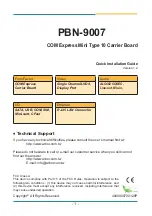
8.4.5 Wheel lock
CAUTION
Wheel lock not engaged when getting in or out
Falling, tipping over of the user due to user error
►
Before the user gets in or out, always engage and check the wheel lock.
►
Engage the wheel lock to prevent the rehab buggy from moving on uneven ground or during transfers (e.g.
into a car).
NOTICE
Incorrect wheel lock operation
Damage to the wheels, loss of braking function due to improper operation
►
Do not engage the wheel lock while driving. The product must be at a standstill before applying the wheel
lock.
►
Do not engage the wheel lock with force.
8.4.5.1 Engaging the wheel lock
1) Pull the wheel lock levers to apply the drum brakes (see fig. 101).
Optional:
By simultaneously moving the
small wheel lock levers down, lock the wheel locks (see fig. 102).
2) Activate the wheel lock levers again to release the wheel locks (see fig. 101).
101
102
8.4.5.2 Adjusting the wheel lock
To achieve an optimum braking effect, the braking force is adjusted using the adjustment screw (see fig. 103, item
2).
•
Increase the braking force:
Back off the adjusting screw.
•
Reduce the braking force:
Screw in the adjustment screw.
1) Loosen the counter nut (see fig. 103, item 1) and back off the adjustment screw until a scraping noise can be
heard when the rear wheel is rotated.
2) Screw in the adjustment screw (see fig. 103, item 2) until the scraping noise at the rear wheel disappears and
the wheel runs freely.
3) Tighten the counter nut (see fig. 103, item 1) until the adjustment screw is fixed.
→
The braking force of both rear wheels must be adjusted equally.
50
Use
Kimba Neo, Kimba Cross, Kimba Inline
































